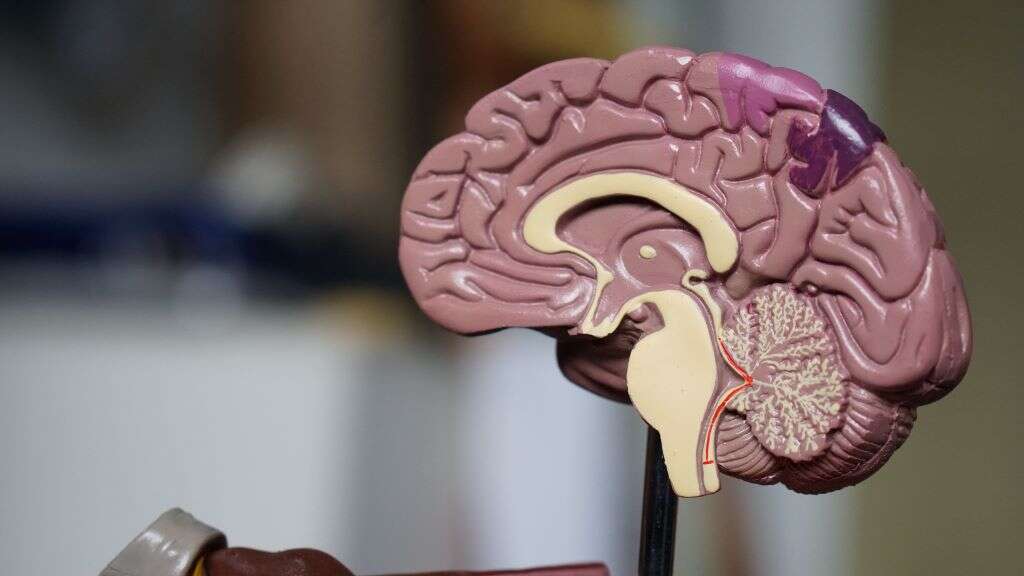The Unified Parkinson's Disease Rating Scale (UPDRS)
 Article Sources
Article Sources
- 1. Perlmutter, Joel S. 'Assessment of Parkinson Disease Manifestations.' _Current Protocols in Neuroscience_, U.S. National Library of Medicine, Oct. 2009, www.ncbi.nlm.nih.gov/pmc/articles/PMC2897716/#:~:text=The most common rating scales,how to implement these ratings.
- 2. Publishing, Harvard Health. 'The Facts about Parkinson's Disease.' _Harvard Health_, www.health.harvard.edu/diseases-and-conditions/the-facts-about-parkinsons-disease.
- 3. Treatment.” _Parkinson's Foundation_, www.parkinson.org/Understanding-Parkinsons/Treatment.
- 4. 'Unified Parkinson's Disease Rating Scale (UPDRS), Movement Disorders Society (MDS) Modified Unified Parkinson's Disease Rating Scale (MDS-UPDRS).' _APTA_, www.apta.org/patient-care/evidence-based-practice-resources/test-measures/unified-parkinsons-disease-rating-scale-updrs-movement-disorders-society-mds-modified-unified-parkinsons-disease-rating-scale-mds-updrs.
- 5. Association, European Parkinson's Disease. 'Rating Scales.' _Rating Scales | European Parkinson's Disease Association_, www.epda.eu.com/about-parkinsons/symptoms/rating-scales/.
While there are no blood tests or imaging scans available to help physicians diagnose Parkinson’s disease in their patients, there are rating scales that can be used to evaluate symptoms and determine the condition’s severity once a neurologist has made a diagnosis. One of the most common worldwide rating scales is the Unified Parkinson’s Disease Rating Scale (UPDRS).1Perlmutter, Joel S. ‘Assessment of Parkinson Disease Manifestations.’ Current Protocols in Neuroscience, U.S. National Library of Medicine, Oct. 2009, www.ncbi.nlm.nih.gov/pmc/articles/PMC2897716/#:~:text=The most common rating scales,how to implement these ratings.
The UPDRS takes into account the broad range of symptoms patients might feel and allows doctors to analyze their intensity. This scale, along with others such as the Hoehn and Yahr staging, helps doctors determine the best course of treatment for patients with Parkinson’s disease.

1. What is Parkinson’s Disease?
Parkinson’s disease is a neurodegenerative disease that affects the dopamine producing neurons. Dopamine plays a key role in motor control, executive function, motivation, memory and attention. Men are more likely to be diagnosed with Parkinson’s than women, and the risk of this condition increases significantly in those aged 50 and older.2Publishing, Harvard Health. ‘The Facts about Parkinson’s Disease.’ Harvard Health, www.health.harvard.edu/diseases-and-conditions/the-facts-about-parkinsons-disease. Although the exact cause isn’t known, the disease has been linked to genetics, exposure to chemicals, and head injuries.
Parkinson’s symptoms often progress over time and can include tremors, muscle rigidity, poor balance, poor posture and bradykinesia (slow body movements). Slurred speech, anxiety and depression are also associated with Parkinson’s disease.

2. What Treatments Are Available for Parkinson’s Disease?
Currently, there is no cure for Parkinson’s disease. In most cases, physicians aim to improve their patient’s lifestyle by prescribing medications to alleviate symptoms.3Treatment.” Parkinson’s Foundation, www.parkinson.org/Understanding-Parkinsons/Treatment. For some patients, this may mean they’re required to take several prescription medications to keep their symptoms under control. Surgical procedures, like deep brain stimulation (DBS), are most often offered in advanced cases of Parkinson’s disease
In addition to medications, a doctor may recommend lifestyle modifications: exercise, adopting a healthy diet and stress management. Individuals living with Parkinson’s should ensure that they’re getting adequate rest.

3. Using the Unified Parkinson’s Disease Rating Scale to Assess Parkinson’s Symptoms
The UPDRS, a comprehensive tool that also considers non-motor symptoms like mental functioning, mood and social interaction, has four segments. Developed in 1987, it has been internationally accepted as the standard for neurologists treating patients with Parkinson’s disease.4‘Unified Parkinson’s Disease Rating Scale (UPDRS), Movement Disorders Society (MDS) Modified Unified Parkinson’s Disease Rating Scale (MDS-UPDRS).’ APTA, www.apta.org/patient-care/evidence-based-practice-resources/test-measures/unified-parkinsons-disease-rating-scale-updrs-movement-disorders-society-mds-modified-unified-parkinsons-disease-rating-scale-mds-updrs. It helps physicians understand patients’ symptoms and determine the best course of treatment.
Neurologists using the scale work with patients to understand their symptoms and assign a number between 0 and 4 to each individual category. Lower ratings equate to no or mild indications, while higher ratings are given for moderate to severe symptoms.

4. Mentation, Behavior and Mood
This segment of the UPDRS consists of four categories: intellectual impairment, thought disorder, depression and motivation/initiative. The intellectual impairment rating considers a patient’s ability to make judgments, solve problems and recall events, and the thought disorder category looks at the frequency of vivid dreams, hallucination, delusions and psychosis.
If a patient is experiencing sustained depression with suicidal thoughts, they may receive a high rating in this category. Those who are withdrawn or have lost interest in their usual hobbies and activities may receive a moderate to severe motivation/initiative score.

5. Activities of Daily Living (ADL)
Many activities of daily living are evaluated in this segment of the UPDRS. That includes speech, swallowing, handwriting, cutting food, dressing, hygiene, walking, tremors and falling.
While many ADL problems aren’t typically seen in Parkinson’s patients until their condition has advanced, mild to moderate ratings in some of these categories can help physicians recognize when progression occurs. In addition to the categories named above, this segment of the scale also has physicians study patients’ sensory complaints and determine whether they freeze when walking.

6. Motor Examination
Motor examination helps doctors understand many of the physical symptoms patients with Parkinson’s disease face. There are 14 individual categories included in this part of the scale, ranging from posture and gait to speech and facial expressions.
When analyzing a patient’s motor skills, physicians will use both questioning and observation to determine things such as the patient’s tendency to experience tremors when at rest, rigidity in major joints, peculiar hand movements and slowness or hesitancy to move.

7. Complications of Therapy
The UPDRS includes a section focused on complications of therapies Parkinson’s disease patients are receiving. It considers whether or not dyskinesia is present, along with how often it occurs and how disabling and painful it is for the patient. Dyskinesia refers to involuntary movements.
Additionally, this part of the scale helps physicians assess clinical fluctuations and “off” periods and changes in blood pressure. It also checks for complications such as anorexia, nausea and sleep disturbances.

8. Modified Hoehn and Yahr Staging
The Modified Hoehn and Yahr Staging scale is often used alongside the UPDRS.5Association, European Parkinson’s Disease. ‘Rating Scales.’ Rating Scales | European Parkinson’s Disease Association, www.epda.eu.com/about-parkinsons/symptoms/rating-scales/. This scale helps determine the stage of the disease a patient is in.
Stages range from 0 to 5, with several half-stages being universally recognized as Parkinson’s progresses. While stage 0 indicates that the patient has no signs of Parkinson’s, stage 5 is assigned to those who are bound to a wheelchair or bedridden. Individuals living with unilateral Parkinson’s are considered to be in stage 1 or 1.5, while those with bilateral Parkinson’s are in stage 2 or higher.

9. Schwab and England Activities of Daily Living Scale
The Schwab and England ADL scale helps physicians and caregivers determine a patient’s ability to perform necessary daily tasks, such as grooming, dressing, toileting and housekeeping. While this scale was designed for those with Parkinson’s, it’s widely used to assess the needs of many individuals living with functional impairments.
On the Schwab and England ADL scale, ratings are represented by a percentage. While 100 percent represents an individual who is completely independent with no impairments, a rating of 0 percent indicates that the patient is in a vegetative state and unable to function whatsoever.

10. Living With Parkinson’s Disease
With the right care plan, patients who’ve been diagnosed with Parkinson’s disease can enjoy a good quality of life. Treatment is critical, and working with a knowledgeable and qualified healthcare practitioner (a neurologist) who understands this condition gives patients the best possible chance at living comfortably with Parkinson’s.
It’s essential patients with Parkinson’s disease pay careful attention to their medication schedule and speak with their healthcare provider when they find something is or isn’t working. The right medications, lifestyle modifications and support system can help patients maintain their independence for as long as possible.











